Career Influences
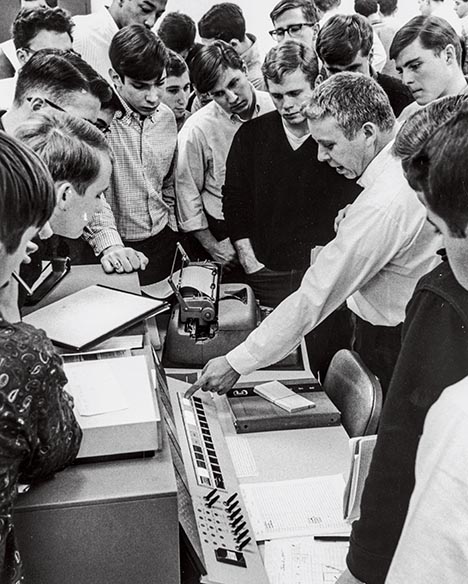
In response to “What are your memories of studying computer science at Colgate?” (“Colgate and the Machine,” summer 2021, p. 46):
My freshman roommate and I took an Intro to Computer Science class on a lark. As a costume design major at the High School of Art & Design in Manhattan, I had limited exposure to science and math, let alone programming, but I discovered I had a knack for it. Under Professor Thomas Brackett’s leadership, I ultimately majored in computers and information science. I still remember the lone terminal in a gray basement corridor that I used for my assignments, and then there was Professor Brackett’s class in very large scale integration; so very cool! Fast forward 30-plus years, looking back at my career in financial services IT at Salesforce, Oracle, Morgan Stanley, and Merrill Lynch, I am grateful for Colgate’s liberal arts education, which encourages students to explore a variety of subjects.
On a side note, Professor Elizabeth Brackett also had a profound influence on me. [I was] an overwhelmed and insecure freshman; she not only provided encouragement, she still is my role model of being a woman in science.
Emily Gilman ’83 Beezley
Choosing to study computer science at Colgate had a massive impact on my career. Professor Tom Brackett was an excellent department chair who showed great flexibility in allowing a kid like me to pursue graduating in three years by enrolling for eight straight semesters, including two summer sessions.
I was allowed to overload with the Machine Language/Assembler course during fall 1978 based on the fact that I had essentially learned the material that summer from my friends and classmates who had already taken the class, which was vital to my likely decision to move up from the Class of 1981 to the Class of 1980. I remember the vast majority of the students who majored in computer science worked together constantly, both as paid computer operators (including those famous late-night shifts in the basement of the Coop) but also as programmers. Our cohort created games that we proudly worked together on, leveraging the technology available at the time, which included cursor addressing on video terminals.
The biggest change that occurred in the curriculum almost immediately after I graduated was the massive shift from a heavy focus on computer theory and how computers were developed and used (almost a computer engineering curriculum) to a focus almost exclusively on programming. Unfortunately, I did not agree with that evolution, as my experience of starting out as a software engineer working on the Backup Flight Software for Rockwell International on the Space Shuttle was dramatically helped by my deep technical focus from Colgate. I leveraged my training in Machine Language/Assembler and other skills to help evolve and fix microcode issues that arose with IBM Flight Computers. Without that background, I would not have been nearly as effective at the young age of 22. More than 40 years later, I am still actively involved in the field.
Marc Fertik ’80
I took Computers, Science and Society in the spring of my freshman year in 1980. We learned to program in Fortran using the school’s DEC 10 mainframe. There were terminals in the computer center in the O’Connor Campus Center and also in the sub-basement of McGregory. When we all had a final project due at the end of the semester, it was difficult to get time on the terminals, and I pulled my only all nighter of my career to get my project done on time.
That was my first experience with computers, and I loved it. I went on to minor in computer science at Colgate and had a successful career as an embedded software engineer. The DEC 10 was replaced by a Vax soon after, which also was a time-shared system with terminals. In my junior year, the center acquired about a dozen Terak RT11 individual computers that used 8-inch floppy disks. Computer Science 101 was taught using the Keller method by that time, and I was one of the tutors. I remember having to teach raw beginners how to copy the operating system onto their blank disks that they had bought at the bookstore. It involved multiple iterations of inserting the master disk followed by the student’s disk in the single drive system. By the next semester, Colgate had acquired a machine with two drives, and the tutors used it to create disks with the operating system preloaded. That made things much easier.
The Teraks had a full screen editor, which was much easier to use than the line editor on the mainframes. I started using it to type my papers for my other classes. Of course, if everyone had done this, it would have overwhelmed the available computers, but only computer science students knew how to use the editor and printer. I never used my typewriter again.
Senior year, I took Computer Generated Music from [Professor] Dexter Morell. It used programs that he and former students had developed on the Vax. In order to play a composition, the entire computer had to be devoted, shutting out any other users until the composition was finished playing.
I have fond memories of the many hours I spent in computer classes and in the computer center with Dr. Brackett and the other professors. Technology has changed so rapidly in my lifetime. It’s amazing to think about how far we’ve come.
Nancy Goering ’83
Did you know IBM hired many of the members of the Class of 1955 about five years after graduation because they were liberal arts grads who were not salesmen and not systems analysts, but could talk to people in client companies effectively?
Bob Youker ’55
Inspired
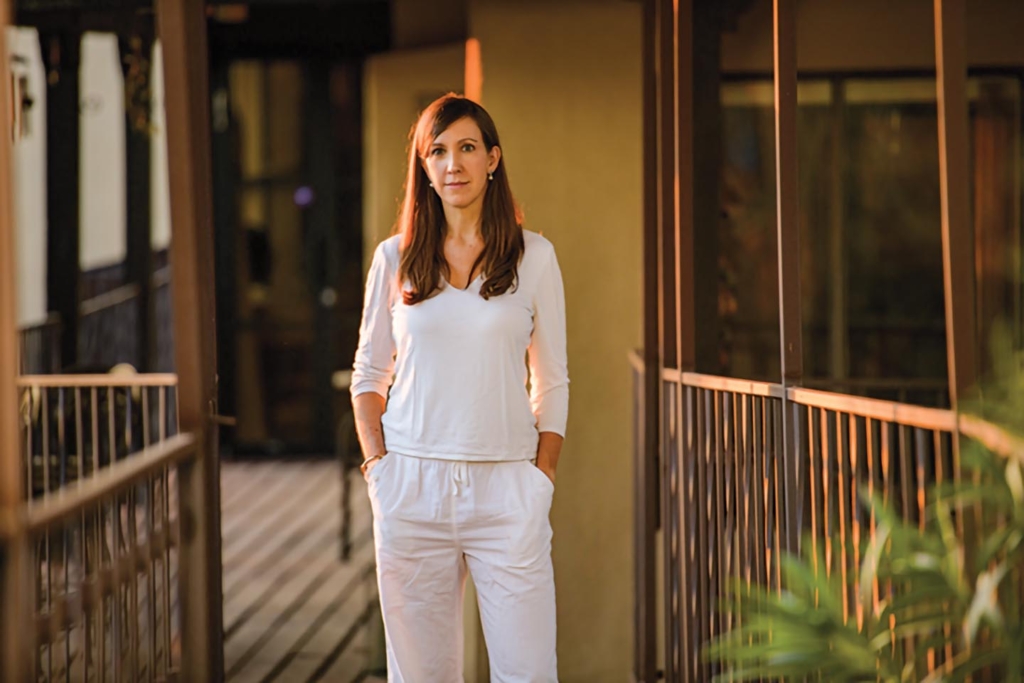
Kathryn Bertine’s (Class of ’97) “Taking a Stand” article (spring 2021, p. 8) is outstanding. Very well written and heartfelt and raw and honest. Amazing!
Kerstan Lincoln ’93 Ruffer
Reward vs. Risk
Looking at your article about concussion research (“Making Headway,” summer 2021, p. 29) with its dizzying graphic of colorful dots and ellipses made me feel like I’d had my bell rung all over again. I played football, hockey, and lacrosse in the days when they put you back in the game after you woke up from a knockout.
As an athlete from middle school through college, I must have had a dozen concussions. One afternoon in freshman hockey practice, I was knocked out and my face was slashed with a skate blade. The coach dropped me at the hospital where I was stitched up and left to walk back to my dormitory in a blizzard. The doctor never checked for concussion.
A week later I was knocked cold playing Army at West Point and woke up in the locker room. It was just part of the game. We used to joke that if you got hit in the head, the coach would hold up his hand and ask, “How many fingers?” and it would always be three fingers.
The new concussion protocols are a good thing — certainly better than just taking the next line shift — but we haven’t stopped playing the sports in which concussions are almost a given. Joining the drama club is about the only way to eliminate the danger. What we ultimately want to know about concussion is not scientific, but whether the reward of sports outweighs the risk. I’ve hardly ever known an athlete without some kind of permanent injury.
It would be good one day to know the true long-term consequences of a few concussions. If you are not a professional boxer, will a half-dozen knockouts eventually turn your brain to mush?
At Colgate, I wondered whether my memory had been affected by concussions, or whether it was just that Doc Reading’s Russian history tests were a bear. But all these years later I have great memories of my time as an athlete and I am still able to write a coherent sentence … or so I think.
Brian Rooney ’74
Fondness for Dana Arts Center
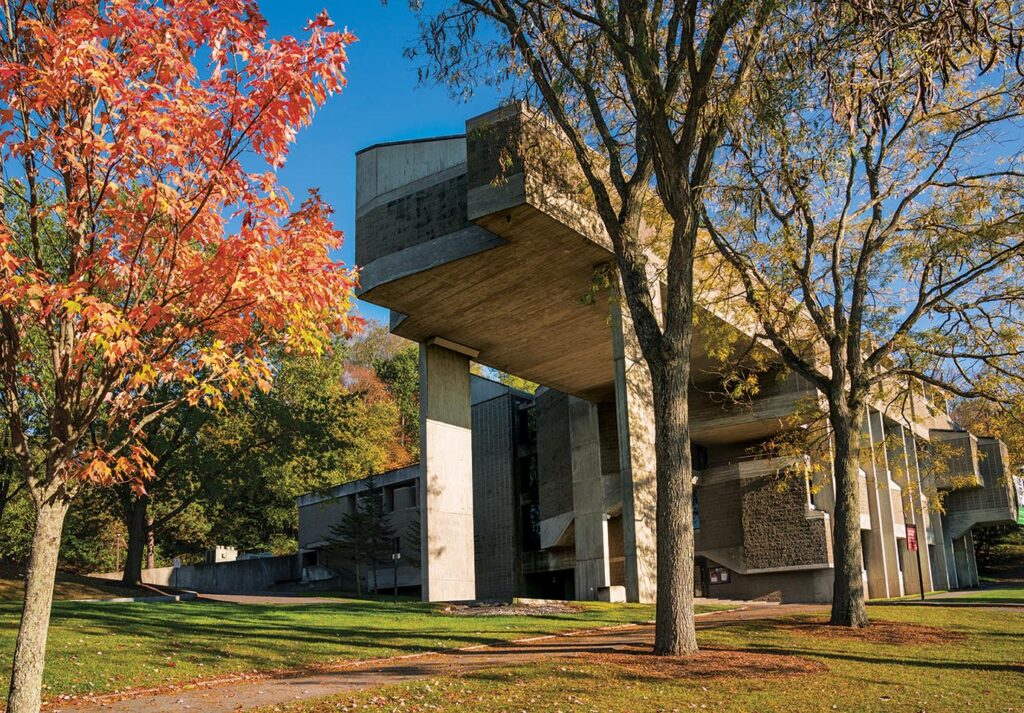
I’m glad to see the picture of Dana (“Places of Imagination,” spring 2021, p. 34), where I spent many happy hours rehearsing, performing, and being in the audience. It is one of my favorite buildings in the world.
Malachy Duffy ’74
Hail to the Chief
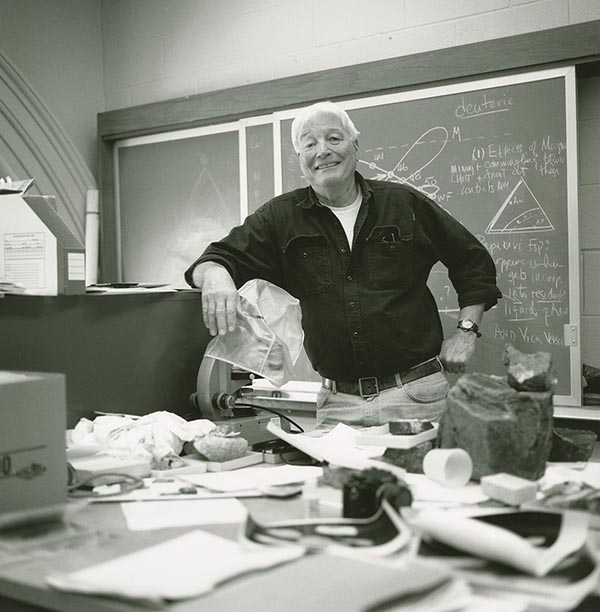
In response to “In Tribute: Jim McLelland” (online, summer 2021):
I remember Chief’s Petrology class and the flood of information that was spewed forth. It required extensive use of colored pencils. And I won’t forget him standing on an outcrop impervious to the swarm of black flies. I feel privileged to have had Chief as an adviser and professor.
Christine Chariton ’84
Words can’t do justice to the man. His company has been sorely missed ever since graduation. He opened his heart and home to others in a way that few people do.
Jesse Coburn ’94
Lucky to spend six months abroad with this absolute giant of a man; intellectual, and gentle, wise soul. All who knew him benefitted deeply from his wisdom. R.I.P. to the Chief. A life well lived!
Robert Ochsendorf ’99
There was only one Chief. Even among a cast of novel individuals in Colgate geology, he stood out — rather, jumped out. He was always a mesmerizing melange of scary and wicked and yet gentle and affirming. And always in command of his facts (scientific and otherwise), the lesson at hand, and the cheer to be spread.
After hearing of his passing, I recalled he was my most ardent cheerleader to go to grad school in Minnesota — where I’ve lived for three decades. My gratitude forever. And my sincere condolences to his family; thinking now of John who shared our field camp in ’91 and inherited some of his dad’s more engaging traits.
There was always a song that sprang to mind when recalling “Brother McLelland.” Now Chief’s gone up to the spirit in the sky!
Charles Tiller ’92
Enrolling in Chief’s Megageology course as a freshman at Colgate (to check off a box and fulfill my science area requirement) forever changed the course of my life.
I ended up majoring in it and loved every single geology course I took at Colgate (and the summer-long off-campus fieldwork study group), and I continued straight through to earn my MS in geology and work for Amoco as a deepwater exploration geologist in the late 1980s.
He was such a mesmerizing professor — both terrifying with his dry gallows humor and endearing (I can still hear his voice in my head, nearly 40 years later!).
I was fortunate to see him a few times after graduation (at one reunion, at the wedding of his son to one of my Colgate geology classmates, at Professor Bob Linsley’s weekend-long retirement bash. My sincere condolences to the entire McLelland family. One of Chief’s most enduring legacies is the legion of students and geologists he helped to launch into the world.
Suzanne Shelley ’82
What a tremendous person, scientist, and mentor. The Chief and his style of educating will be missed by Colgate and the earth science community. He was my initiation into geology via freshman year Megageology, and I took all his courses and never looked back. He (and Professor Sheila Seaman, also now deceased) were my first true mentors. I think about those days often with fondness and smile realizing that the Chief was a mentor to so many Colgate students, and not just geology majors. What a scientific and educational legacy! As Chief would have said: A toast to “Brother” McLelland.
Jeff Standish ’92
Jim McLelland was a larger-than-life character. I’m 27
years into my career as a professional geologist, and I can say with certainty that my path to being an earth scientist started with the Chief’s Megageology course my freshman spring. His voice boomed across the lecture room in Lathrop Hall.
I don’t believe I knew exactly what I wanted to do back in 1988, but I was inspired by the Chief to question, investigate, learn, hypothesize, and reevaluate those ideas. (Chief’s generation of geologists had to come to grips with plate tectonics — a seismic shift in our understanding of the
Earth.) Looking back now, I am grateful to have hiked the Adirondack trails with the Chief. RIP, dear friend.
David Foss ’91
Lasting Impressions
In response to “In Tribute: Richard Sylvester” (spring 2021, p. 70):
Professor Sylvester was one of the best teachers I’ve ever had the pleasure to study with. His enthusiasm and kindness inspired me in my language learning. He made a lasting impression on the trajectory of my life.
Suzanne Daly ’96
I took a year of introductory Russian with Professor Sylvester in 1992, and while I didn’t continue with the language, I remember him well. He was a great teacher and always struck me as a kind and caring man. I still remember the way he said очень хорошо [very good] when he was happy with an answer or pronunciation! Sorry to hear of his death, but I think he lived a very fine life.
Daniel Williams ’96
Musician/Activist/Father
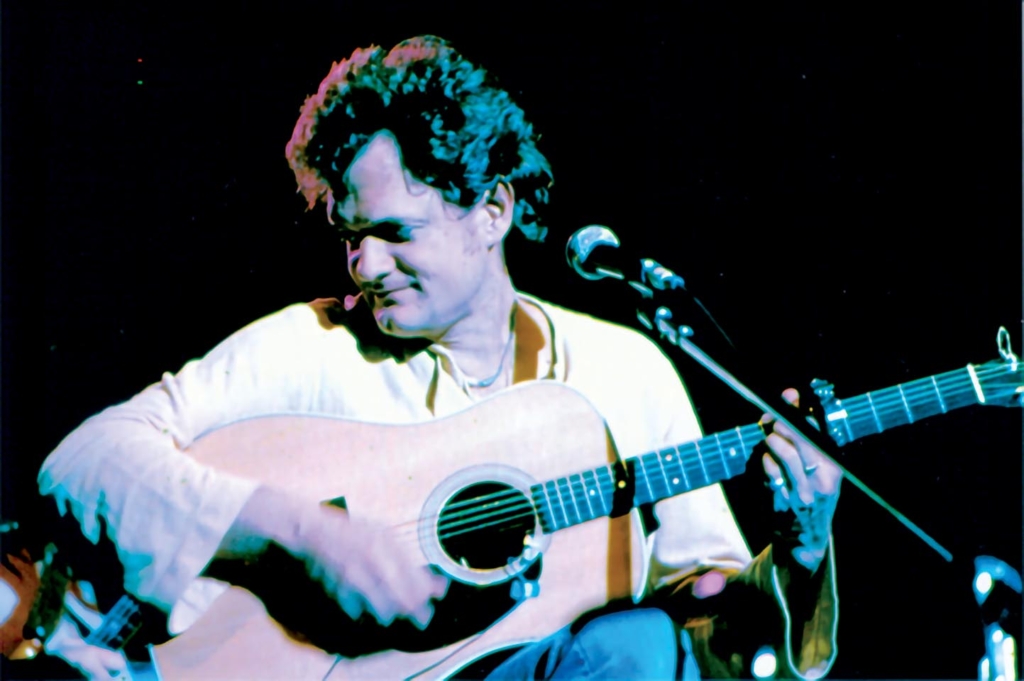
On “A Troubadour’s Humanitarian Legacy” (spring 2021, p. 55):
I loved Harry Chapin’s music. Saw him perform live up the road at Hamilton College in maybe ’79 or ’80. And was about to leave to see him at Eisenhower Park when we heard about the tragic accident. Looking forward to seeing the documentary.
Sharon Adler ’82
Listen to Your Heart
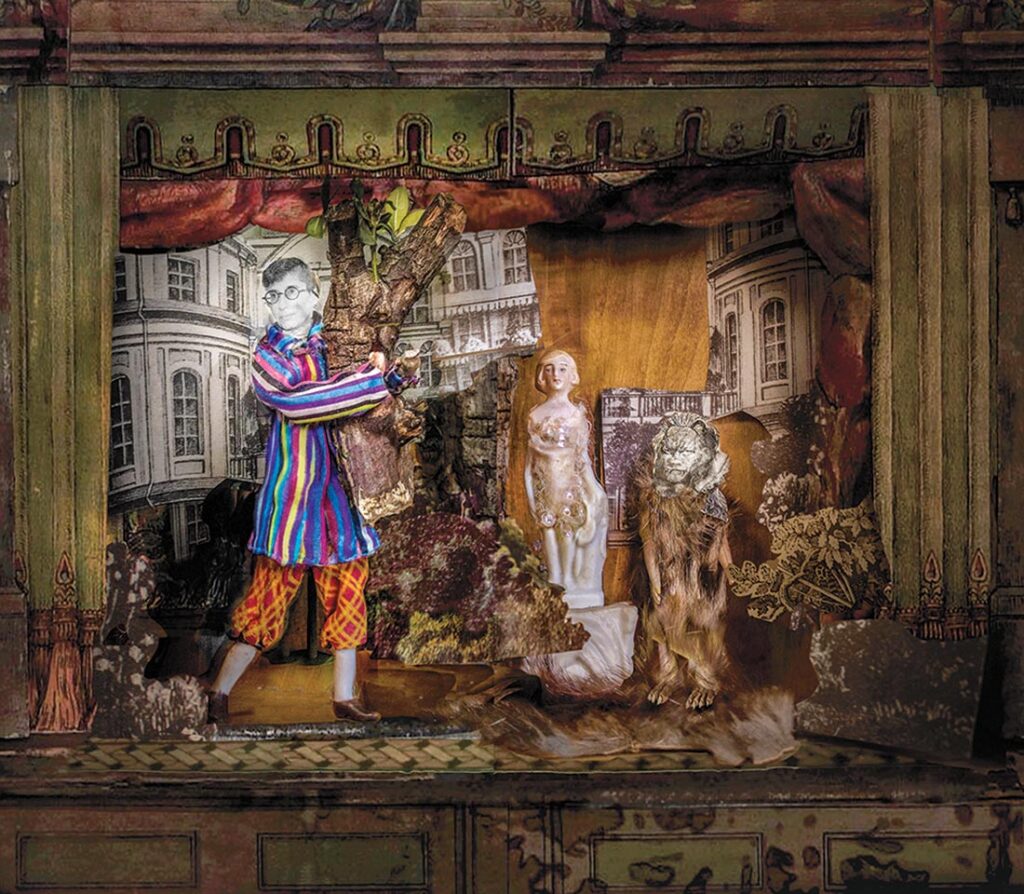
On “From Science to Set Design” (spring 2021, p. 86):
Yes! We don’t have to be stuck doing what we’re doing or living where we’re living. We have the power to listen to our hearts and to follow them. Way to go, Suzi!
Nancy Howland Walker ’87
For Kicks
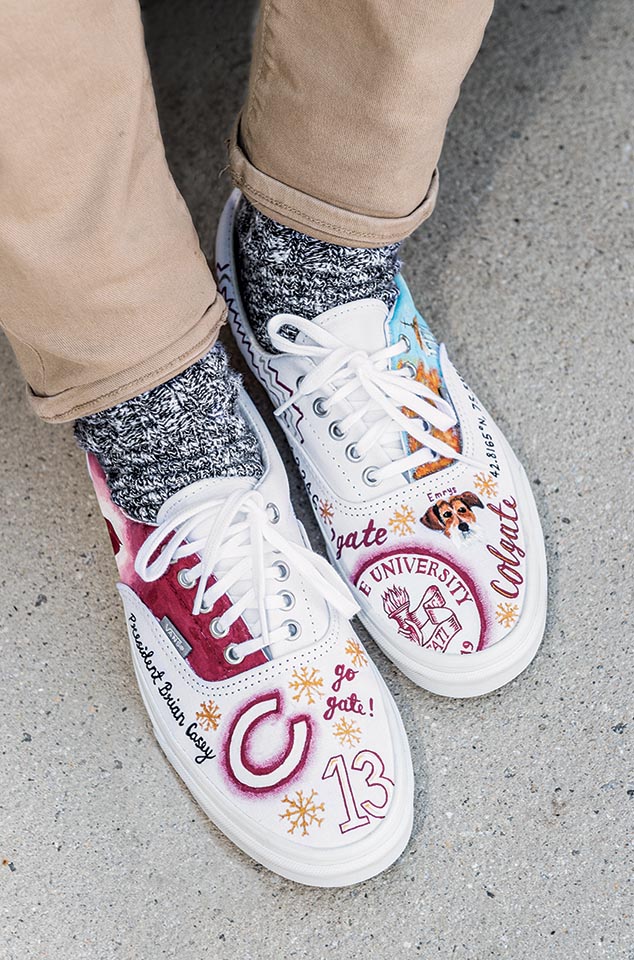
On “Venturing Into the Unknown, With Guidance” (summer 2021, p. 52):
Love these and so excited to wear my pair to homecoming!
Susie Becker ’03 Gould
Positive Influence
On “Breaking Open” (summer 2021, p. 10):
Chris [Fagan ’77] was a fraternity brother. He was an influence with those who knew him. Blessings to the Fagans.
Anthony Pietrafesa ’78
